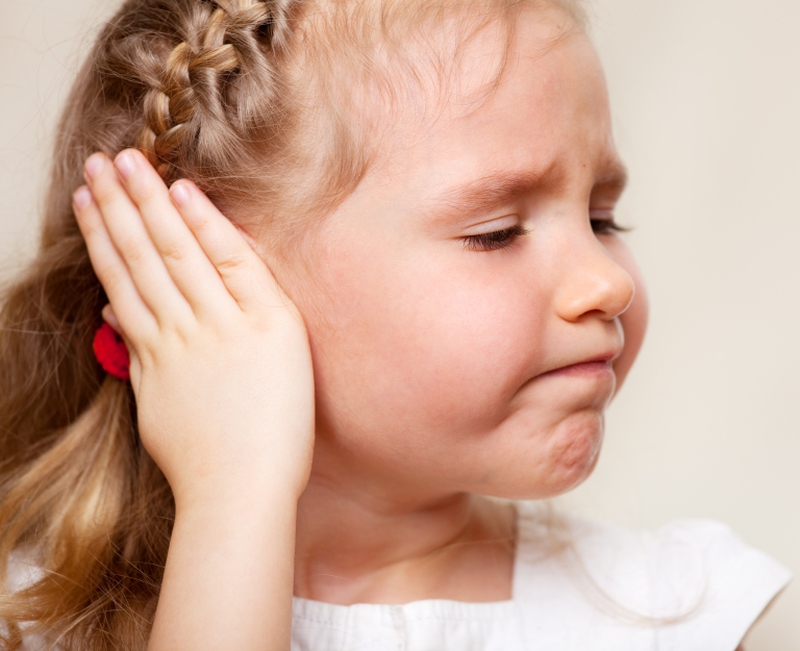Though predominant in children and infants, ear infections may also occur in adults. The buildup of fluids in the ear associated with such infections increases pressure on the eardrum. This increased pressure results in pain in the ear. During such times, you may use painkillers to ease the pain, but do ear infections go away on their own?

Do Ear Infections Go Away on Their Own?
Yes, the majority of ear infections will go away on their own within two to three days. This can be attributed to the ability of the immune system to naturally clear the viruses and bacteria that cause the various ear infections.
The pain associated with ear infections is a result of accumulation of fluids in the middle ear or inflammation in the ear. As such, it is advisable to have the doctor examine the ear, even after the infection has healed. The infection you are having right now could be related to the one you had previously or something different. Other severe cases of ear infection could also lead to head and jaw pain. Such cases of ear infections do not go away on their own and could lead to permanent ear damage.
What Can I Do to Feel Better?
Use heat to ease and reduce the pain
Apply either a heating pad or a warm compress on the affected ear. This heating may also free up the liquids held between earwax, allowing for them to drain.
Use household products such as rice or salt
Once heated, salt may be used as a remedy for ear infection, in that it draws fluids from the ear, hence easing the pain and relieving the swelling. To achieve this:
Heat a cup of salt in a pan on a stovetop, in a double boiler or in a microwave for about five minutes.
Put the hot salt in a sock or a thick cloth and seal the open end by tying a knot or using a rubber band.
Once the salt reaches a comfortable temperature, lie down and apply it to the affected ear for about 10 minutes.
The procedure should be repeated daily until the ear has healed. While using rice, you should also follow the same procedure.
Use olive oil to clear obstruction
Among the commonest causes of ear infection is an infection of the earwax by either bacterial or fungi. This infection results in the blockage of the Eustachian tube. To clear this obstruction using olive oil, use the following procedure:
Warm a small amount of olive oil slightly and apply a few drops into the infected ear.
After the infected wax has softened, you should use cotton-tipped swabs to remove it from the ear. However, you should be careful not to insert the swabs too far as they could damage the eardrum.
If you do not have olive oil, you may also use mustard oil to remove the infected wax from the ear.
Use garlic
Garlic has natural pain relieving and antibacterial properties. As such, it's very effective in relieving ear infections. To use garlic for this purpose, you should:
Heat two garlic cloves in either mustard oil or sesame oil until it turns black and strain the solution. This is done to obtain garlic oil. After heating the oil, you should apply a few drops into the affected ear as ear drops.
The other method you may use with garlic is to boil two or three garlic cloves in water for about five minutes. Crush the garlic cloves and add some salt. You should then place the mixture in a clean cloth and place the cloth against the infected ear.
To speed the healing, you may also consume about two or three cloves of raw garlic every day.
Use antibiotics
You may also get a prescription of antibiotics and strong ear drops from your doctor. Among the commonly used ear drops that are to heal ear infections include antipyrine-benzocaine-glycerin, also known as Aurodex. This ear drop is ideal for patients whose eardrum is still in good shape.
Use ear tubes if the condition keeps recurring
If the ear infection is recurrent, you may also ask your doctor about the possibility of using ear tubes. For instance, having otitis media recurring four times in a year or three times in six months, you may need remedies like ear tubes. The tubes are basically meant to drain fluids from the middle ear. The ear tube surgery, also referred to as myringotomy, is a procedure that involves surgical insertion of tiny tubes into the eardrum to drain fluids. It is basically an outpatient procedure.
When to See a Doctor
The various symptoms and signs of ear infection may be a manifestation of various conditions. As such, it is highly advisable to seek medical attention the moment you experience the symptoms. It is important to get accurate diagnosis immediately and appropriate treatment thereafter. When you or your child develops any of the following symptoms, you should seek immediate medical attention:
The symptoms of ear infection last for more than one day
The pain in the ear is sever
There is a bloody discharge, pus or fluids from the ear
If the child is restless, irritable or sleepless after an infection of the upper respiratory tract such as cold
View All Comments /Add Comment